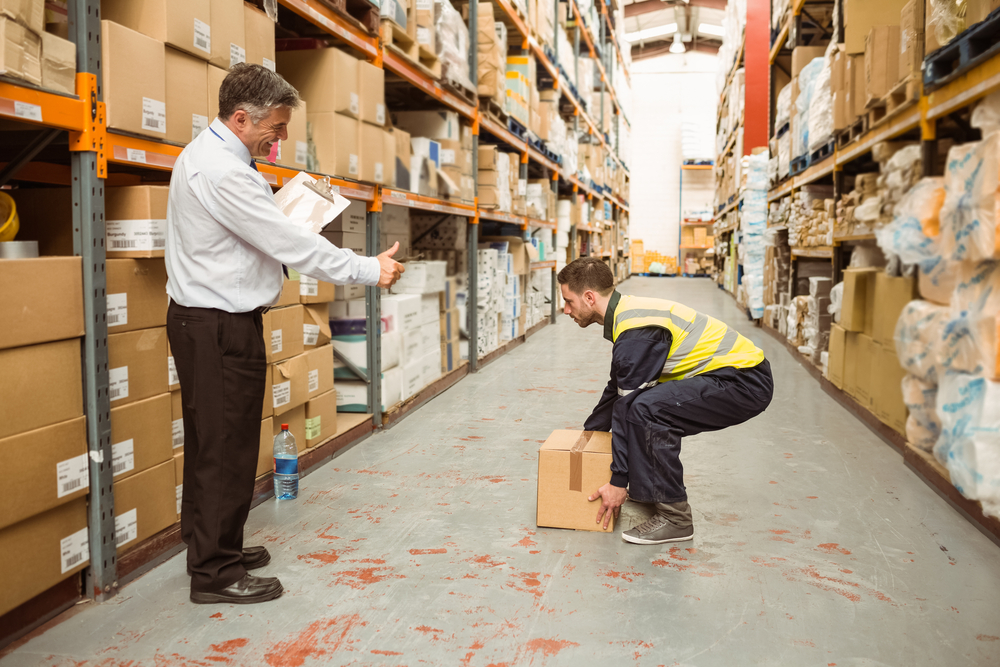You probably know the drill with lifting by now – bend your knees, etc. etc. but do you actually practice this regularly? Sometimes when we’re busy or thinking about other things, we can forget to cover the basics and that’s when things can go wrong. So let’s take it back to the beginning, this is manual handling 101.
Before you start
Before you just go and grab whatever it is you need to pick up, take a minute to plan.
Do you know where you’re taking it? Is the path you’re going to take clear of any obstacles or hazards?
Check how heavy the item is as things can often weigh more than they look. Then decide if you’ll need help, whether that’s from a mate or a trolley.
Note that you should be using mechanical aids instead of just your body whenever you can to avoid any injuries, so consider using a trolley or wheelbarrow straight off the bat.
It’s also a good idea to warm up a bit with a few stretches before lifting, especially if it’s first thing in the morning and your muscles aren’t ready to go just yet.
Lifting
If you’ve decided you can lift the item by yourself, make sure you start with a stable base – that is, your feet flat on the ground and slightly apart to give you a good foundation.
You know how it goes, no back-bending here, use your thigh muscles to bend at the knees to pick up the load. Also remember that the closer the item is to your body, the less strain you’re putting on your back, so be sure to hug the load as much as possible.
If you need to turn at any point, make sure you move your feet to turn – any twisting or leaning is going to put heavy strain on your spine.
Make sure you’re looking ahead when you’re moving and not at the ground – not only will this keep your back and spine in a good position, it’ll also allow you to see if any obstacles get in the way, like your mate wandering into your path.
Avoiding risks
You can avoid risks by using the right lifting and moving techniques, but you can also avoid risks beforehand by taking some precautions on site.
Storing loads at a good height will reduce bending and twisting of your body to get to them. Keep loads at waist height, and work on benches that are a good height for you to avoid bending over.
You should always keep site surfaces clear and clean – not just to avoid lifting accidents, but to avoid any other general accidents like slipping or tripping.
Correct clothing and PPE should always be worn when carrying heavy loads, particularly gloves and safety boots – no one wants a sliced finger or crushed toes…
Now that we’ve refreshed you on the basics, get out there and lift safely, guys!
